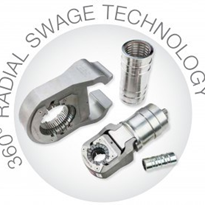The PROFINET communication standard for the diagnostics and management of automation networks is ideally suited for acceptance testing and continuous monitoring of the network. In addition, it provides functionality to efficiently carry out maintenance tasks. While primarily used in new projects, this solution can also be integrated seamlessly into existing facilities. One of the major users of the PROFINET solution is the premium car manufacturer Audi at their Neckarsulm site.
INDUSTRIAL COMMUNICATION
Communication Requirements of Body Manufacturing Production Planning and Final Assembly
The body manufacturing production planning department is responsible for the plant technology of new body manufacturing facilities. These cover all production steps from the manufacture of the component parts to the assembly of the complete body-in-white including doors and flaps. For this purpose, PROFINET was introduced in 2006 and has been employed ever since in linear, star, and ring network topologies using Conformance Class C (PROFINET IRT) devices. The automation networks are integrated into the corporate network using SNMP services and a defined transfer interface. Besides PLCs, robots and, partly also process devices are equipped with PROFINET controller functionality. As the associated project engineering tools typically only support the diagnostics of PROFINET devices assigned to them, a central overview of the network state of the entire plant is lacking.
As a central requirement to the PROFINET diagnostics solution to be used, the body manufacturing production planning department requested its consistent use in the various project phases of the plant. During the installation phase, all components-
Requiring minimum space in the control cabinet, THLINK PROFINET supplies detailed information on the devices in use.
ts are built into the plant as defined in the specification. The subsequent commissioning procedure is completed by creating an acceptance report that includes communication characteristics serving as a reference for future target / actual comparisons. In the maintenance phase, finally, the operation of the facility is continually monitored so that conditions such as device errors or an additional communication load on individual ports due to a change to a camera that requires higher bandwidth, can be detected. In the event of a malfunction, it is necessary to locate its cause quickly so that a suitable maintenance action, e.g. test of a device, replacement during the next scheduled facility maintenance, or immediate installation of a spare device can be initiated.
The final assembly department performs all operations on the painted car body, from installing the interiors as well as the engine and the gearbox, to the final inspection and factory acceptance test for the automobile. Here, primarily flatPROFINET structures with a central network connection of the PC to the switch
are used. For the A4 and A6 series, final assembly at the Neckarsulm site relies on approximately 60 PROFINET networks, separated from each other by firewalls. A diagnostics and monitoring solution which specifically meets maintenance requirements, which can be integrated into the maintenance workflows, and which takes some load off the limited resources had to be built into the existing networks. Great importance is attached to the use of tools which are independent of the PROFINET components employed and lend themselves to integration into projects and existing networks while the facility is in operation. What is more, the integration must neither require additional components, such as database computers nor installation work and must make do with the limited space in the control cabinet.
Comprehensive Diagnostics and Monitoring Solution for Use in All Project Phases
Meeting the Audi requirements requires a diagnostics and monitoring solution which provides all diagnostics, system, and device information permanently records monitored actual conditions and enables access to historical data from the entire network. This way, all required information is available in case of need. Critical sub-functions of the solution employed are a topology view that allows a quick localization of failed devices, the display of detail information for the components in use, including inventory and stock details, as well as the detection of intermittent communication errors. After gathering experience from corresponding test installations and a detailed comparison of the requirements with the supported functionality, the body manufacturing production planning and final assembly departments at the Neckarsulm site opted for the diagnostics and monitoring solution from Softing Industrial Automation which is based on two components. The TH LINK PROFINET product provides secure access to the individual PROFINET networks and monitors the communication
and device status on the network based on a specific diagnostics algorithm. This algorithm not only performs passive monitoring of the data traffic but also actively uses the diagnostics options provided by PROFINET and general Ethernet protocols. This allows to identify the devices on the network, supply device diagnostics information including network statistics, detect communication errors, and determine the network topology. The TH SCOPE monitoring software gathers all data at a central location and presents the consolidated data in a graphical user interface accessible from a web server. The presentation of the results is geared to a consistent use across the various project phases and in particular, supports the completion of maintenance measures.
In the meantime, Audio has included this solution as an integral part of all new body manufacturing projects managed by the Neckarsulm site. 25 PROFINET networks in new projects were equipped with this solution in 2014. In addition, the diagnostics and monitoring solution is gradually integrated into existing final assembly facilities. This integration in the control cabinet requires minimum installation effort and can be accomplished without stopping normal operation. Up to now, about 60 PROFI-NET networks could be retrofitted. The introduction of the Softing solution is accompanied by a 1-day training course held regularly for Audi employees by Softing.
“A major benefit for Audi
is the consistent use of the diagnostics and monitoring solution, from installation
to daily operation. This allows us, for example, to do reference measurements for a comparison of the acceptance test situation to the current network status and quickly spot any alterations.”
Felix Niederbacher, Technical Manager for Automation Engineering Standardization
Benefits for Daily Operation
The TH LINK PROFINET and TH SCOPE products support Audi with ensuring a consistently high quality of the PROFINET communication both for network acceptance testing and during normal operation. Due to the straightforward and quick determination of error causes after the detection of erratic behaviour, constantly higher availability of the facilities is achieved. The possibility to connect an entire network including its subnetworks by means of a single TH LINK PROFINET device contributes to a positive cost-benefit ratio. Another decisive factor is the option to retrofit existing facilities without stopping normal operation.
“A major benefit for Audi is the consistent use of the diagnostics and monitoring solution, from installation to daily operation. This allows us, for example, to do reference measurements for a comparison of the acceptance test situation to the current network status and quickly spot any alterations,” concludes Felix Niederbacher, technical manager for automation engineering standardization in the body manufacturing production planning department. “As part of the cooperation with Softing, the tool was optimized to meet the specific Audi requirements. Besides network diagnostics, the solution also covers the use of the tool in the factory acceptance procedure and in the creation of suitable network documentation”.



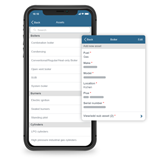


-160x160-state_article-rel-cat.png)
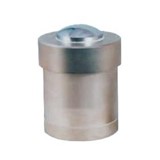






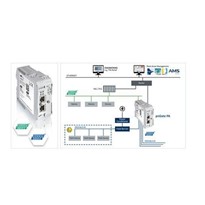
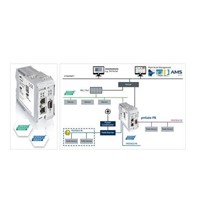
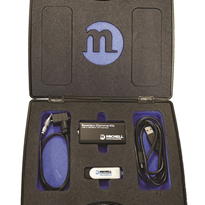

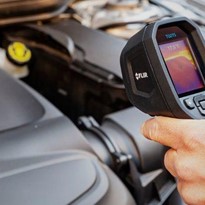

-205x205.jpg)



